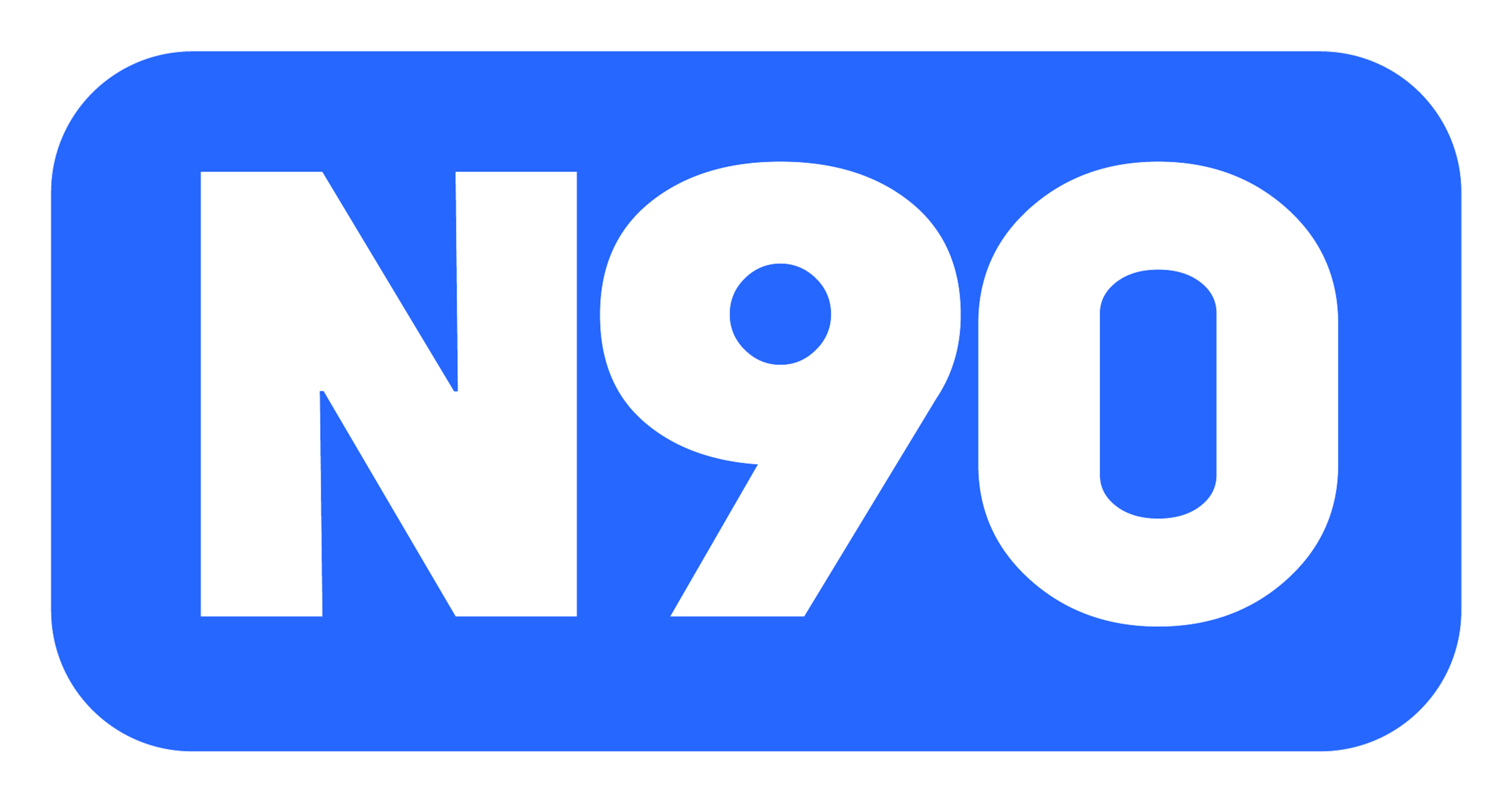Over 99.5% of registered businesses in the Philippines are part of the MSME sector, with medium enterprises playing a critical role in job creation and economic growth. Yet, many of these businesses still struggle to access the right financing when it's time to scale operations, invest in equipment, or improve cash flow.
If you're a business owner looking to grow but facing financing challenges, this blog can help. We’ll cover the best loan for business in the Philippines, explain what lenders expect, and share useful tips to support your funding decisions.
What is Medium Enterprises?
A medium enterprise is a business that operates on a larger scale than a small business but is not yet as expansive as a large corporation. These businesses play a vital economic role by contributing to employment, innovation, and regional development. They are officially defined using two criteria: number of employees and asset size.
- Based on the Number of Employees:
According to the Philippine Statistics Authority (PSA), a business qualifies as a medium enterprise if it employs 100 to 199 workers. This classification differentiates it from small businesses (10–99 employees) and large businesses (200+ employees).
- Based on Asset Size
Under the Magna Carta for MSMEs, medium enterprises are defined as having assets worth over ₱15 million but not more than ₱100 million, excluding land value. This financial capacity reflects their readiness for more complex operations and greater business investments.
As these businesses scale up, the financial needs also grow, and that’s where targeted financing solutions come in.
What is a Medium Enterprise Loan for Business?
With larger workforces, expanded operations, and more substantial revenue streams, medium enterprises often require tailored financing to support continued growth. A medium enterprise loan is a type of business financing specifically designed to match these businesses' scale, needs, and risks.
Here’s what makes these loans distinct.
- Loan Amounts: Medium enterprise loans for businesses typically have higher credit limits than small business loans, making them suitable for significant investments like machinery, real estate, or expansion projects.
- Interest Rates: While rates vary depending on the lender and the business’s financial health, medium enterprises often receive competitive terms due to their established track records and revenue potential.
- Loan Purpose: These loans are essential for companies looking to scale strategically. They can be used for working capital, equipment purchases, business expansion, or entering new markets.
- Qualification Requirements: To qualify, businesses must show stable revenue, submit financial statements, and provide valid business registration documents. Depending on the lender, collateral may or may not be required.
These features make medium enterprise loans a helpful tool for fueling business growth when the right financing is within reach. Two main financing paths are available to medium enterprises: traditional banks and alternative lenders. Let’s discuss these financing options in detail.
Traditional Lending Options for Medium Enterprises
If you own a medium-sized business in the Philippines, you’ve probably experienced how challenging it can be to secure the right financing. Finding a reliable lending partner can help stabilize and grow your business, whether for working capital, expansion, or equipment.
Below is a detailed guide on which banks offer SME loans in the Philippines and what each provides.
1. Land Bank of the Philippines (LANDBANK)
LANDBANK is a government-owned bank that actively supports small and medium businesses, especially those in agriculture, education, and rural areas.
- I-RESCUE Lending Program: Designed for businesses recovering from disruptions. Offers lower interest rates and flexible repayment schedules.
- ACADEME Lending Program: Tailored for educational institutions and training centers that need working capital or improvement funds.
LANDBANK programs often come with government guarantees, making the terms more flexible. These loans can be used for business recovery, expansion, payroll, or equipment. Depending on the program, proof of business stability and collateral may be required.
2. Development Bank of the Philippines (DBP)
DBP is a state-owned development bank committed to driving inclusive economic growth across the country. It actively supports medium enterprises, particularly those in priority sectors like infrastructure, logistics, manufacturing, and agribusiness.
- Sustainable Enterprises for Economic Development (SEED) Program: This program aims to boost the growth of Filipino-owned enterprises by providing financing for business expansion, modernization, and innovation. It's designed to empower local businesses that contribute to sustainable economic activity and job creation.
- Sustainable Agribusiness Financing Program (SAFP): Tailored for agribusinesses, this program helps improve food security and enhance the agricultural sector's competitiveness. It offers financial support for production, processing, and distribution activities in the agricultural value chain.
DBP's loan programs are especially suited for medium enterprises with long-term growth plans. While collateral and detailed documentation are typically required, these programs offer favorable terms and a strong development focus beyond just financial returns.
3. Bank of the Philippine Islands (BPI)
BPI offers SME loans under its Ka-Negosyo Loan line. It’s a popular option for already operational businesses that want an accessible loan process.
- Ka-Negosyo Term Loan: Ideal for buying new equipment, expanding premises, or launching a new product line.
- Ka-Negosyo Credit Line: Helps manage day-to-day operational expenses and cash flow gaps.
BPI allows applications to start online. Loans are available for businesses with at least one year of operation and sufficient financial documents, including bank statements and tax records.
4. Philippine National Bank (PNB)
PNB offers SME loans with flexible repayment options and traditional banking support. It’s a good choice for businesses that prefer working closely with a relationship manager.
- SME Term Loan: For long-term funding needs such as purchasing fixed assets or expanding to new locations.
- Medium-Term Loan: Maturities of over one year but not exceeding five years.
- Long-Term Loan: Maturities of more than five years. These loans are well-suited for purchasing equipment, expanding facilities, or launching large-scale projects.
- Credit Lines: Offer flexible, short-term financing solutions to help businesses manage day-to-day operational expenses and cash flow gaps.
- Revolving Credit Line (RCL): This is used to finance working capital needs such as inventory and receivables. It is available through promissory notes (up to 360 days), post-dated checks, or real estate mortgages.
- Domestic Bills Purchase Line: This line lets you convert your customers' checks and other negotiable peso instruments into immediate cash.
PNB loans usually require collateral and thorough financial records. However, they are reliable and structured to support sustainable business growth.
5. Asia United Bank (AUB)
AUB is a smaller commercial bank offering customized financing solutions for SMEs.
- Business Loan for SMEs: Funds can be used for capital expansion, equipment, or day-to-day operations.
AUB provides a more personalized banking experience. Loans are tailored based on your business’s revenue and financial profile. While their programs may require collateral, they offer competitive interest rates and flexible terms.
This loan is ideal for entrepreneurs who prefer digital solutions. The fast and straightforward process suits businesses already comfortable with online banking.
Alternative Lending Options for Medium Enterprises
Traditional bank loans aren’t always the right fit for every medium enterprise, especially when faced with rigid requirements, lengthy approval times, or the need for collateral. For businesses needing quicker access to capital, more flexibility, or a different approach, alternative lending options are becoming an innovative and accessible solution.
Below, we explore some of the most trusted non-bank lenders in the Philippines, reshaping how medium enterprises get funded.
1. n90
Loan Types: Bridge Loans, Small Business Loans, Invoice Financing
n90 is a financing partner built specifically for small and medium enterprises (SMEs) in the Philippines. Whether your business earns below ₱15 million or above ₱150 million annually, n90 offers customized credit limits and interest rates to match your needs and growth stage.
Their core offerings include:
- Bridge Loans – For urgent cash flow gaps or time-sensitive opportunities
- Small Business Loans – Flexible financing for working capital, inventory, or expansion
- Invoice Financing – Turn unpaid invoices into immediate working capital
What sets n90 apart is its relationship-first approach. Unlike traditional lenders, n90 combines speed, transparency, and financial coaching to help SMEs access and use funding wisely. Every loan comes with hands-on guidance and zero hidden fees.
Fully digital and always human, n90 is the smarter way to finance your business.
- Apply in minutes.
- Get personalized support.
- Stay focused on growth.
Ready to move your business forward? Get funded today!
2. First Circle
Loan Types: Revolving Credit Line, Short-Term Working Capital
First Circle is a Philippine-based fintech lender that provides non-collateral credit lines designed for SMEs with ongoing cash flow needs. It is especially helpful for businesses supplying to large companies or government contracts, but also supports a broader range of industries, including trading, services, and manufacturing.
Their flagship product is a Revolving Credit Line, a reusable, flexible loan facility that allows businesses to withdraw funds as needed and repay on their own schedule. This is ideal for handling seasonal cash flow fluctuations, fulfilling large purchase orders, or bridging payment cycles.
3. Esquire Financing Inc.
Loan Types: Non-Collateral Business Loans
Esquire is known for offering fast, unsecured loans to SMEs. It’s suitable for business owners looking for flexible loan terms without the burden of providing collateral. The company’s loan products can be used for various needs, from inventory to business expansion.
The application process is simple and designed for entrepreneurs across different industries. What makes Esquire attractive is its speed. Once your application is approved, disbursement can happen quickly, helping you take advantage of immediate opportunities.
4. Acudeen
Loan Types: Invoice Financing / Receivables Discounting
Acudeen helps businesses turn unpaid invoices into working capital. This is especially useful for SMEs with large clients paying 30- to 90-day terms. You can sell your receivables at a discount and receive cash upfront through its platform.
The process is fast and digital. Acudeen evaluates the creditworthiness of your client, not just your business, which gives more access to newer companies with limited credit history. This service suits companies in distribution, logistics, manufacturing, or service sectors with long payment cycles.
Before choosing between traditional and alternative lenders, it's essential to understand what makes a loan application successful. Whether you're applying with a bank or a digital platform, being prepared can significantly improve your chances of approval.
Factors to Consider Before Applying for a Medium Business Loan
A business loan can help you expand operations, improve cash flow, or invest in new opportunities.
But before you apply, it’s essential to understand the key factors that can affect your approval and long-term financial stability. Here's what to keep in mind.
- Credit History Matters: A poor credit history can significantly reduce your chances of approval. Ensure your credit records are accurate and work on improving them if needed before applying.
- Cash Flow Stability: Lenders want consistent cash flow, proving your business can meet repayment obligations. Unstable or limited cash flow may cause your application to be rejected.
- Create a Solid Business Plan: A detailed and realistic business plan shows lenders how you intend to use the loan and how you will generate enough revenue to repay it. This plan is a key document in your application.
- Be Organized with Documentation: Having all necessary documents, like financial statements, tax records, and business permits, ready and well-organized, speeds up the application process and builds lender confidence.
- Seek Expert Advice: Consulting with financial advisors or business mentors can help you better understand your financing needs and prepare your application to increase your chances of approval.
- Estimate the Right Loan Amount: Borrow only what you need. Overestimating can lead to a higher debt burden, while underestimating may leave your business underfunded.
- Develop a Realistic Repayment Plan: Show lenders you have a clear strategy for repaying the loan within the agreed terms. A practical repayment plan demonstrates your business’s financial responsibility.
Being well-prepared boosts your chances of loan approval and saves time and resources, helping your medium enterprise secure the funding it needs to grow.
Final Note!
Finding the right financing for your medium-sized enterprise is crucial to sustaining growth and stability. For medium enterprises, this means working with lenders who understand your scale and offer the flexibility to match it.
If traditional banks feel limiting or slow, it might be time to explore smarter, faster alternatives. At n90, we focus on supporting Philippine SMEs with funding that’s transparent, responsive, and built around your business goals.
Get in touch with n90 today and discover how smart financing supports your next growth phase.
FAQs
1. How long does getting approved for a medium enterprise loan usually take?
A: Approval times vary depending on the lender and loan type. Traditional banks often take anywhere from a few weeks to over a month due to thorough documentation and credit checks. Because of streamlined digital applications and automated assessments, alternative lenders and fintech platforms typically offer faster processing, sometimes within days. Preparing your documents in advance can help speed up the process.
2. Can medium enterprises apply for multiple loans from different lenders at the same time?
A: Yes, medium enterprises can apply for loans from multiple lenders simultaneously. However, managing your loan applications carefully is important to avoid overextending your credit and complicating repayment schedules. Lenders may also review your existing loans when assessing risk, so transparency and maintaining good credit standing are key.
3. What are the common reasons medium enterprise loan applications get rejected, and how can I avoid them?
A: Common reasons for rejection include poor credit history, insufficient or unstable cash flow, incomplete or disorganized documentation, lack of a solid business plan, and unrealistic repayment projections. To avoid rejection, ensure your financial records are accurate, prepare a clear business plan, keep your documents organized, and apply for a loan amount that aligns with your repayment capacity. Seeking advice from financial experts can also improve your chances.













